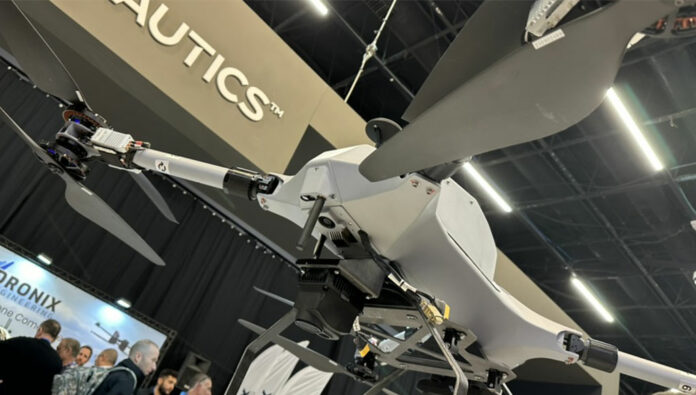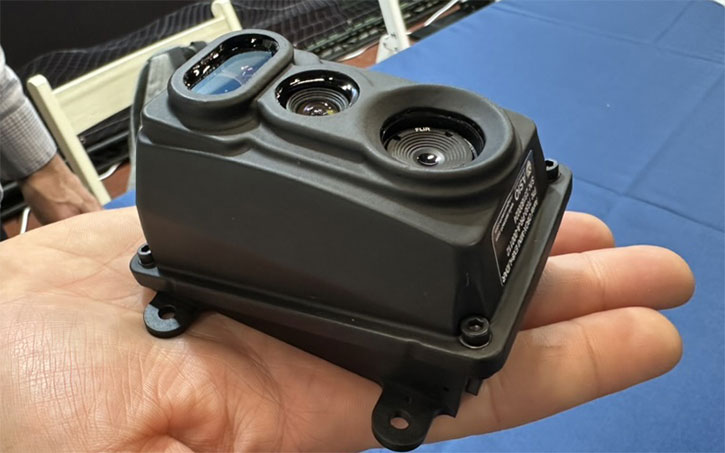
Image-Based Navigation
Vision technologies promise an alternative for some GNSS-dependent navigation applications, with image-based solutions capable of accurately positioning without reliance on satellite signals. Such a system is the AeroGuardian NOCTA developed by Asio Technologies. As a vision-based system, it provides a jam-proof navigation solution that can operate with or without GNSS input based on visual mapping of the terrain in which it operates. This self-contained system provides the host system with position and navigation data based on a terrain map that any surveillance can prepare means available to the user. It can be integrated with any drone and operate with or without other navigation systems. This combat-tested solution is especially suited for environments where GNSS signals are compromised, jammed, or unavailable.

The US company Scientific Systems has developed ImageNav, a non-GPS precision navigation software library that uses inertial measurement information to match EO/IR video images captured by an onboard camera against stored geo-registered digital terrain elevation data (DTED) to determine the precise location of the carrying platform in real-time. ImageNav uses time-synchronized camera imagery up to 1024×1024 pixels in size at up to 30 frames per second. ImageNav can be integrated with Space, Weight, and Power (SWAP) challenged applications such as loitering weapons, launched effects, guided weapons, and UAS, where it can be implemented as a software library, a stand-alone processor board, or a self-contained hardware payload.
Artificial Intelligence
AI algorithms can ingest data of attack patterns and learn over time, so they become more advanced in protecting PNT systems. By analyzing interference and spoofing attack patterns, AI can help develop predictive models to counteract these threats or dynamically adjust to ensure the integrity of PNT data. For this purpose, the US Department of Homeland Security released the Epsilon algorithm in 2021. Epsilon provides spoofing detection functions to existing receivers as a software library without requiring hardware modifications. Commercial GNSS receivers also use AI techniques to enable multipath reception in urban environments. AI has also proved effective in vision navigation systems, where it is used to recognize patterns for objects and reference points.
Quantum Navigation
The development of quantum navigation technologies offers promising PNT alternatives for terrestrial applications on Earth and in outer space. Quantum sensors can provide highly accurate PNT information independent of satellite systems, potentially rendering GNSS jamming and spoofing obsolete.
Cybersecurity for GNSS Infrastructure
Recognizing that GNSS infrastructure is a target, future efforts will focus on enhancing the cybersecurity of ground stations, control systems, and communication links. Protecting these critical components is essential to safeguarding the GNSS ecosystem against disruptions.
Strategic Implications
The strategic implications of these advancements in NAVWAR are profound. The importance of PNT systems is not limited to military capabilities or commercial uses but as a cornerstone of global security, economic stability, and societal functioning. Dominating the NAVWAR terrain, defeating adversary actions, dominating the spectrum, and mitigating cyber threats require international cooperation, regulatory frameworks, and shared standards and norms to ensure the reliable use of space-based navigation and alternative navigation solutions.
Conclusion
The future of NAVWAR is a complex interplay of technology, strategy, and diplomacy. As we advance into this future, the key to success lies in innovation, collaboration, and the relentless pursuit of resilience. By staying ahead of the curve in detecting and mitigating NAVWAR threats, we can secure the PNT services that underpin our modern way of life against the challenges of tomorrow. The journey ahead is one of constant vigilance and adaptation as we navigate the ever-evolving terrain of electronic warfare to protect and preserve the unseen signals that guide us through the world.



















